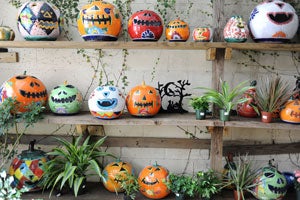Profile: Growing into the family business
Published 3:18 pm Wednesday, March 6, 2013
Myers Plants and Pottery steadily expanded, and Stewart’s brother, Cliff, began working in the store in 1980. Stewart took a brief hiatus from the family business when he joined the U.S. Army in 1977; he returned to help with the Pelham store in 1988. Chuck passed away in 1982, and his wife and sons continued the legacy.
“My brother, Cliff, burnt out on the retail side. Now he works with a grower in Shelby County, so he’s still in the business. A lot of our stuff is locally grown,” Stewart said.
About 70 percent of the store’s flowering plants are grown in Shelby County or Central Alabama, Stewart said.
Myers Plants and Pottery has stood up to chain gardening stores through the years, as K-Mart and Sears were “big guys” in the industry.
“We used to order five different shrubs. Now, you’ve got to come in and show 25 kinds of hostas (plants) and ferns,” Stewart said. “(Customers) don’t realize how easy (they) have it now.
“We’re willing to change,” he added. “A lot of people in the business are wanting to stay the same.”
Darlene Webb, who has worked at Myers for 14 years, said the business succeeds because it isn’t a “cookie cutter place.”
“People come by weekly peddling whatever craft they make, and Stewart will buy a few of them and see how it goes,” Webb said.
BECOMING SOMETHING NEW
The business’ products have always been a study in trying new trends, and in the early `90s, Myers branched out to selling ornamental fish. As he spoke of the fish, Stewart reached into the rock koi pond on display in the back of the store and let the koi nibble on his fingers. He said he feeds the fish with a baby bottle.
“People were seeing it, but there was nothing in the Birmingham area. It’s been very successful,” Stewart said.
Another big seller resulted from Stewart taking a risk. Eight to 10 years ago, Stewart was approached to sell Talavera ceramic pumpkins. The handmade, clay pumpkins first came from Myers’ original pottery supplier in Brent, Miller Pottery. Today, the pumpkins come from a city in Mexico.

Southern Living magazine featured Myers’ Talavera pumpkins as its “pick of the month” in 2009. (Reporter photo/Jon Goering)
“I thought it’d be neat to take our holiday (Halloween) and the way they paint and mix the two,” Stewart said of the pumpkins decorated in a Hispanic tradition.
“The first year, I thought, ‘Do I order 200 pieces? 300? 50? It’s either going to go or not going to go. There’s no marketing plan or strategy,” he said.
The store has shipped clay pumpkins to 47 states, the Middle East and the United Kingdom, Stewart said. Additionally, Southern Living magazine featured the pumpkins as its product “pick of the month” in 2009.
“We’ve had people change their vacation routes to swing through Alabama to pick up pumpkins. Retailers in other states ask if they can buy them because they saw them in someone else’s yard,” Stewart said.
Myers Plants and Pottery also holds a secret envious competitors would love to know.
The store’s ever-popular bottle trees are made of rebar or steel bars and colorful glass bottles. The trees are made by a “good country boy that can make anything at a reasonable price” from lower Alabama, Stewart said. “It has a big following. Dealers in other states are begging for our source.”
According to Stewart, bottle trees originated in the days of slavery, where slaves believed the bottles would catch evil spirits or “haints.” As part of the superstition, African slaves would place the bottle trees in front of their homes to draw the spirits toward the bottles and away from their houses.
After catching a spirit, “they would cork the bottle and toss it in the river to throw your troubles away,” Stewart said.









